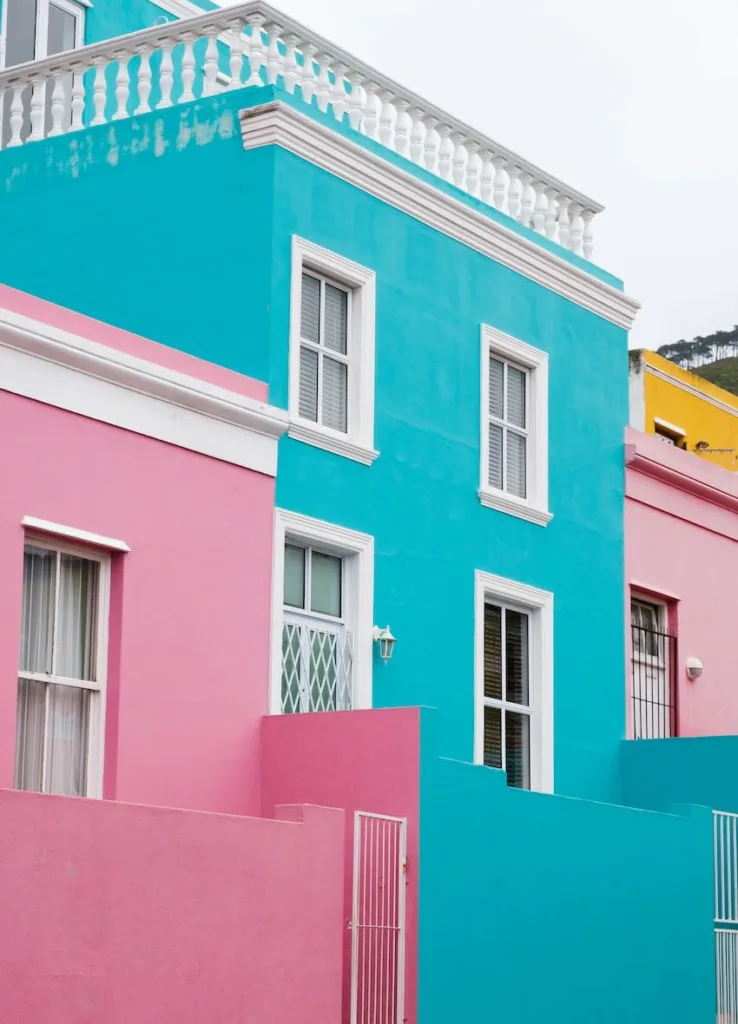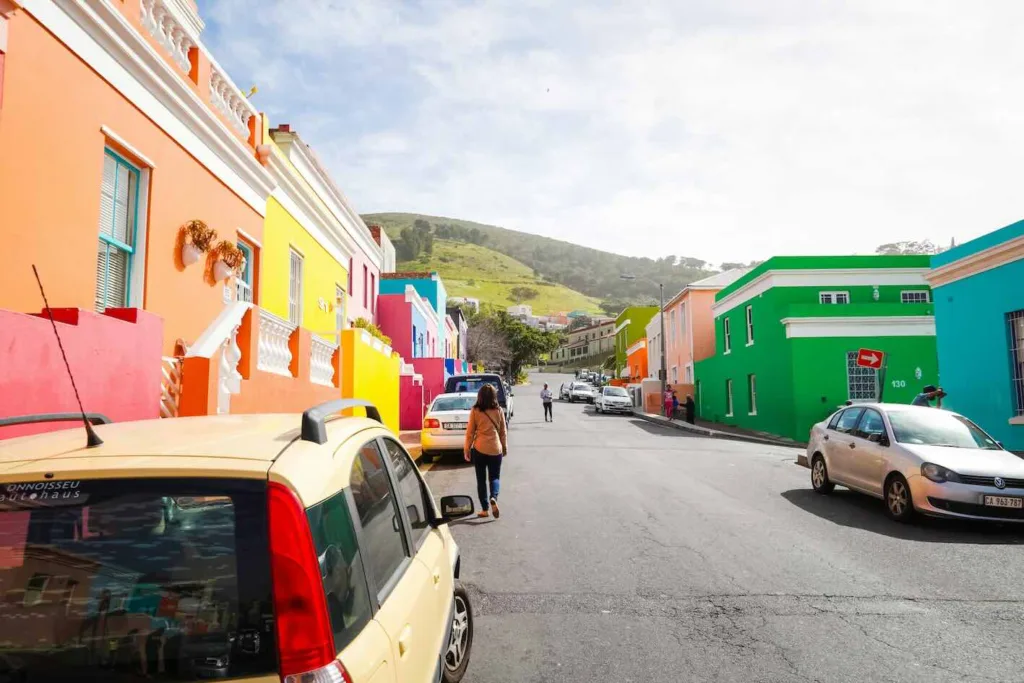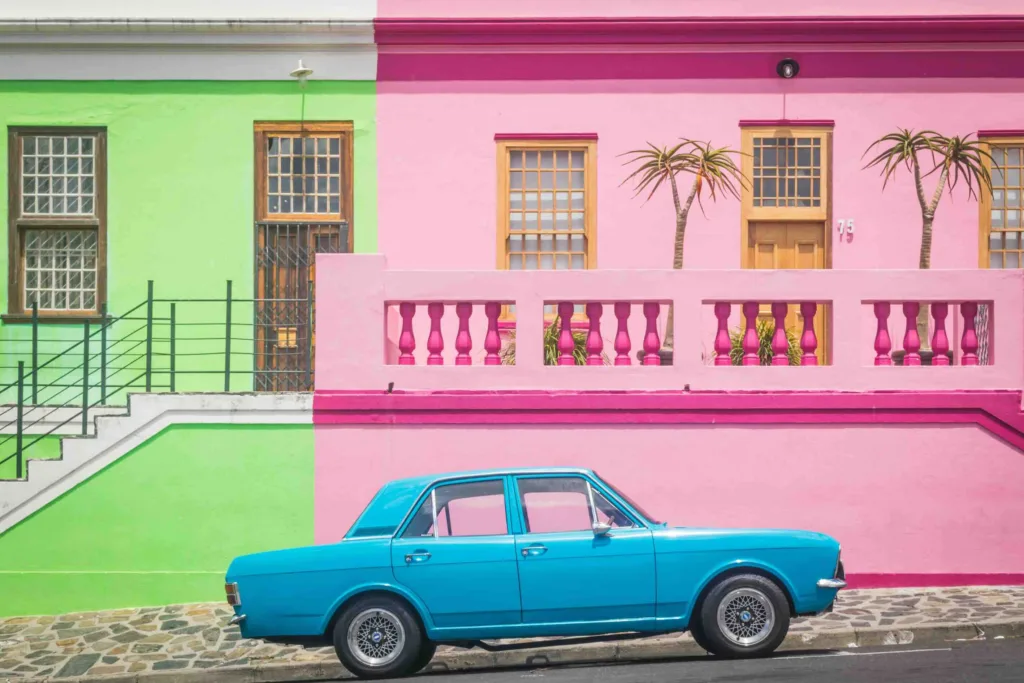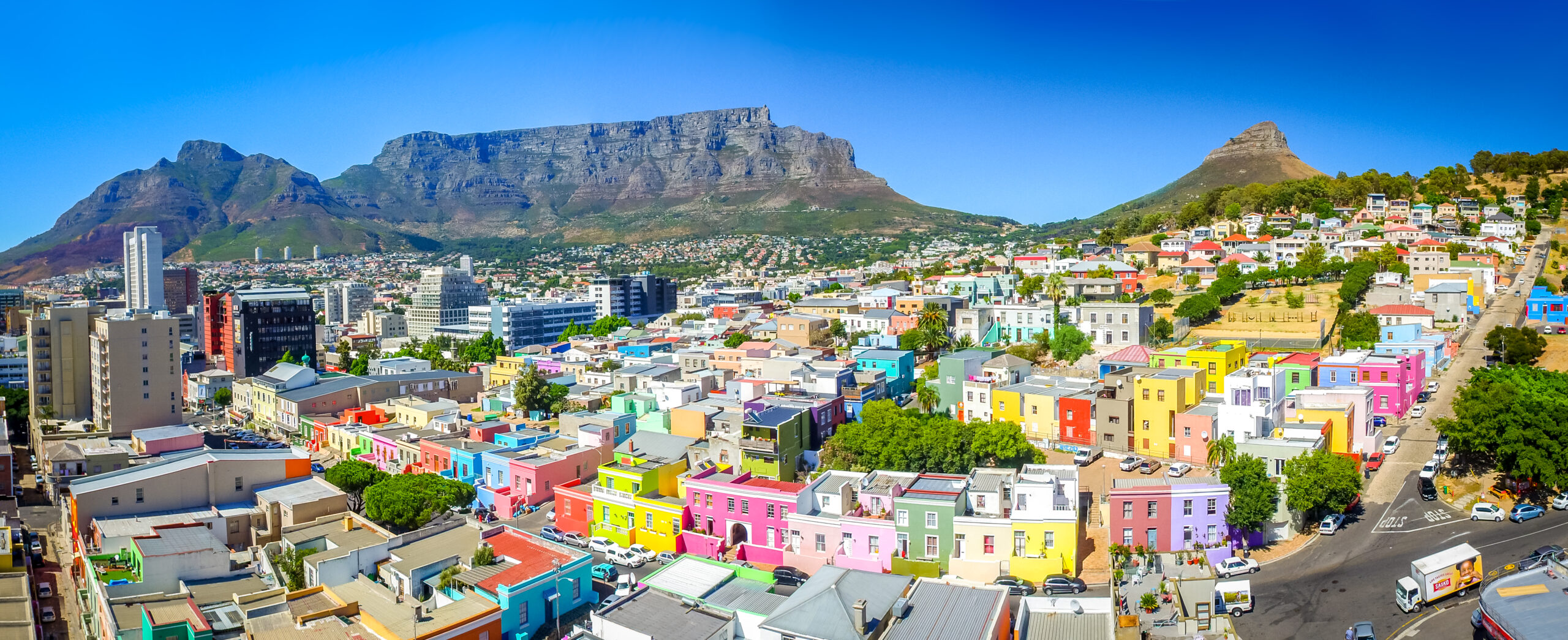There is no doubt that Cape Town’s vibrant and historically significant Bo-Kaap neighbourhood is well known for its colourful houses, cobblestone streets, and rich cultural heritage, all of which have long captivated the hearts and minds of travellers. The Bo-Kaap neighborhood in Cape Malay culture is nestled on the slopes of Signal Hill and not only offers a feast for the eyes, but also offers an immersive journey into the heart of the Cape Malay culture. From where to stay to what to see, eat, and do, I will walk you through everything you need to know to make the most of your visit.
Table of Contents
- What is Bo-Kaap?
- How to Get to Bo-Kaap
- Top Attractions in Bo-Kaap
- A Walk Through Bo-Kaap: What to Expect
- Where to Stay in Bo-Kaap
- Best Restaurants and Cafes in Bo-Kaap
- Shopping in Bo-Kaap
- Cultural Insights: History and Heritage
- Key Takeaways: Pros and Cons
- Frequently Asked Questions
What is Bo-Kaap?
Bo-Kaap is one of Cape Town’s most iconic and colourful neighbourhoods. Originally known as the Malay Quarter, Bo-Kaap is steeped in history, culture, and a sense of community. The area is renowned for its pastel-painted houses, narrow cobbled streets, and the rich influence of Cape Malay culture. The neighbourhood is situated at the foot of Signal Hill, offering beautiful views of the city, Table Mountain, and the Atlantic Ocean.
This area was once home to many freed slaves, who brought with them a blend of Islamic, African, and Malay traditions. Over the years, Bo-Kaap has become a symbol of resilience, diversity, and pride. It’s not just a neighbourhood; it’s an experience, with its vibrant streets, historical landmarks, and friendly locals welcoming visitors to learn more about their culture and heritage.
How to Get to Bo-Kaap
Address: Bo-Kaap, Cape Town, Western Cape, 8001, South Africa.
Bo-Kaap is centrally located, making it easily accessible from many parts of Cape Town. Whether you’re arriving by public transport, private car, or on foot, here are some options to get there:
- From Cape Town International Airport: A taxi or Uber ride to Bo-Kaap takes approximately 25 minutes (around 20 km), costing around 250-300 ZAR.
- From the City Centre: If you’re staying in the heart of Cape Town, Bo-Kaap is just a short walk from the city centre (about 10-15 minutes), and it’s easy to navigate via Google Maps.
- Public Transport: You can take a MyCiTi bus, which offers a convenient and affordable way to get around Cape Town, although Bo-Kaap may require a short walk from the nearest bus stop.

Top Attractions in Bo-Kaap
1. Bo-Kaap Museum
The Bo-Kaap Museum offers visitors a deep dive into the history and culture of the Malay people in Cape Town. Housed in a beautifully preserved house, the museum explores the lives of early Malay residents, the history of the area, and the influence of Islam on the community.
- Hours of Operation: Monday to Saturday, 9:00 AM – 4:00 PM.
- Admission Fee: 40 ZAR per person.
- Address: 71 Wale Street, Bo-Kaap, Cape Town.
2. The Atlas Trading Company
For those interested in local spices, The Atlas Trading Company is a must-visit spot. This market-style store offers a dazzling array of spices, herbs, and local products. It’s a sensory explosion of colour and smell, and perfect for picking up souvenirs to take home.
- Address: 44 Wale Street, Bo-Kaap, Cape Town.
- Opening Hours: Monday to Saturday, 9:00 AM-5:00 PM.
- Instagram: @atlastradingco
3. The Auwal Mosque
The Auwal Mosque is South Africa’s oldest mosque, built in 1794. It’s an integral part of the Bo-Kaap community and a symbol of the area’s Islamic heritage. Visitors can explore the mosque, learn about its significance, and even attend a prayer session if you’re respectful and mindful of local customs.
- Address: 43 Dorp St, Cape Town City Centre, Cape Town, 8001, South Africa
- Opening Hours: Call ahead for tour availability.
A Walk Through Bo-Kaap: What to Expect
The best way to experience Bo-Kaap is to take a leisurely stroll through its streets. As you wander through the neighbourhood, you’ll encounter stunningly bright homes, each with its own history and charm. The colours of the houses are not only a visual delight, but they also hold cultural significance. It’s believed that the vibrant hues were chosen to symbolize freedom after slavery was abolished.
Here are some of the things to expect during your walk:

- Vibrant Houses: The pastel colours of the homes make for stunning photo opportunities. As you walk along the streets, be sure to snap a few photos of the iconic houses.
- Cobblestone Streets: The charming cobbled streets add to the quaint atmosphere of the area. Some of the streets are narrow, so take your time and enjoy the old-world charm.
- Local Art: You’ll find local artists displaying their works along the streets, adding to the creative vibe of Bo-Kaap.
Where to Stay in Bo-Kaap
While Bo-Kaap itself doesn’t have as many large hotels, there are plenty of boutique accommodations that capture the essence of the neighbourhood. Here are a few great options:
1. The Bo-Kaap Hotel & Boutique Suites
A chic hotel offering modern amenities in a historical setting. It’s a great place for visitors who want to experience the charm of Bo Kaap without sacrificing comfort.
- Price Range: 1,500 ZAR – 3,500 ZAR per night.
- Address: 25 Wale Street, Bo-Kaap, Cape Town.
2. Sweet Ocean View Guesthouse
This guesthouse offers a cozy atmosphere with beautiful views of the ocean. It’s just a short walk from the Bo-Kaap area, making it a convenient and comfortable stay.
- Price Range: 1,200 ZAR-2,500 ZAR per night.
- Address: 9 Barkly Rd, Sea Point, Cape Town, 8005, South Africa
Best Restaurants and Cafes in Bo-Kaap
Food in Bo-Kaap is a blend of Malay, African, and European influences, offering a unique culinary experience. Here are some of the best places to dine:
1. Biesmiellah
Biesmiellah is one of the oldest and most famous restaurants in Bo-Kaap, serving traditional Cape Malay dishes. Try their signature “bunny chow” or “denningvleis” (a rich curry dish).
- Address: 2 Wale St & Pentz St Bo-Kaap, Schotsche Kloof, Cape Town, 8000, South Africa
- Hours of Operation: 11:00 AM- 9:00 PM.
- Price Range: 100 ZAR-250 ZAR per person.
2. Cape Malay Cooking Safari
For something a little different, try the Cape Malay Cooking Safari. This experience offers a unique opportunity to learn how to cook traditional dishes in the homes of Bo-Kaap locals.
- Booking Required: Yes, check the official website for tour dates and prices.
- Website: Cape Malay Cooking Safari
Shopping in Bo-Kaap
Bo-Kaap is home to some lovely artisan shops selling everything from spices to local crafts. Whether you’re looking for a special souvenir or just want to browse, here are some places worth checking out:
1. The Spice Route Market
Located at the foot of Bo-Kaap, this bustling market is a great place to buy locally sourced products, spices, and handmade crafts.
- Opening Hours: Monday to Saturday, 10:00 AM- 4:00 PM.
2. Bo-Kaap Craft Market
This market features handmade goods, traditional textiles, and other local products. It’s a great place to support local artisans and pick up unique souvenirs.
Cultural Insights: History and Heritage
Bo-Kaap’s history is deeply intertwined with the history of Cape Town. The area was initially settled by slaves brought from the East Indies, Malaysia, and other parts of Africa. Many of these former slaves were skilled tradespeople, artisans, and cooks, and they brought their cultural traditions with them.
Bo-Kaap is not just a picturesque neighbourhood but also a living testament to the resilience and vibrancy of the Cape Malay people. Walking through the streets of Bo-Kaap, you’ll find a place that’s proud of its history and culture, where the past is beautifully preserved in the buildings, food, and everyday life.

Key Takeaways: Pros and Cons
Pros:
- Rich Cultural Heritage: Bo-Kaap offers a deep insight into Cape Malay culture and the history of Cape Town.
- Photogenic Streets: The colourful houses make for fantastic photo opportunities.
- Local Experience: The neighbourhood offers a true sense of community, with friendly locals and authentic experiences.
- Delicious Food: The food in Bo-Kaap is one of its highlights, offering a unique mix of flavours and traditions.
Cons:
- Touristy: While the area is steeped in history, it can also feel a bit touristy, especially during peak seasons.
- Limited Accommodation Options: The selection of hotels is small, though boutique stays are available.
- Crowded Streets: Some areas, especially the popular streets, can get crowded with tourists.
Frequently Asked Questions
1. Is Bo-Kaap safe to visit?
Yes, Bo-Kaap is generally safe to visit, especially during the day. However, like any urban area, it’s important to stay alert, particularly at night.
2. How much time should I spend in Bo-Kaap?
A half-day is usually enough to explore Bo-Kaap and its attractions. However, if you’re interested in taking a cooking class or spending more time exploring the museums, you might want to plan for a full day.
3. Can I walk around Bo-Kaap on my own?
Absolutely! Bo-Kaap is a walkable neighbourhood with plenty to see. Just be mindful of the cobblestone streets and narrow paths.
Whether you’re a photography enthusiast, history buff, or simply someone looking to immerse yourself in a unique cultural experience, Bo-Kaap offers something for everyone. From its colourful houses and delicious food to its rich history and friendly locals, this iconic neighbourhood is a must-visit when you’re in Cape Town.










